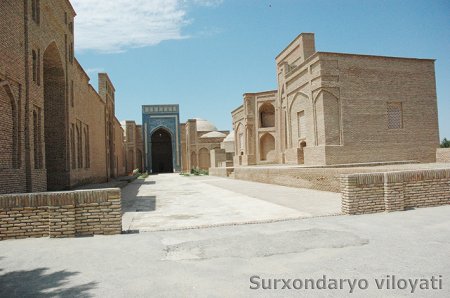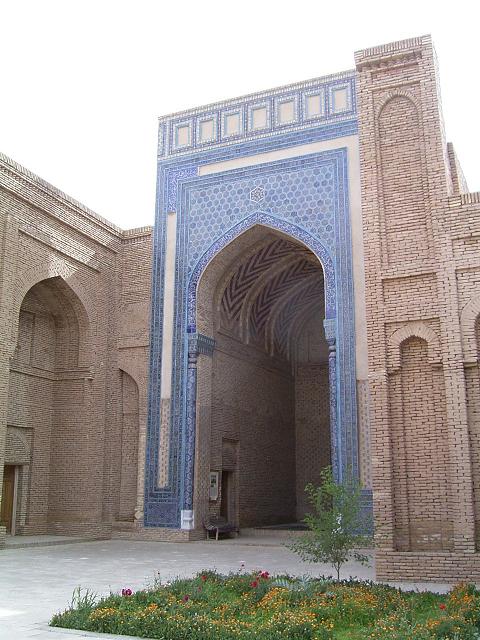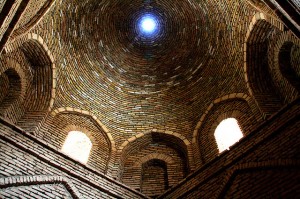The Sultan Saodat is located in the outskirt of modern Termez, in Uzbekistan. The name Sultan Saodat (سلطان سعادة) means "His Excellency Sultan or Sultan’s well-being" in Arabic.
The complex of Sultan Saodat, which was formed between the 11th and 17th centuries, has the graves of the influential Sayyid dynasty of Termez. Termez Sayyids, according to legends, are direct descendants of the Islamic prophet, Muhammad. The founder of the family was Termez Sayyid Hassan al-Amir, the fifth generation of Husayn ibn Ali, the grandson of Muhammad.
Sultan Saodat complex is a series of multi-religious structures - mausoleums, mosques, khanaqa - built on the perimeter of the yard and the elongated constituted a coherent and concise composition. The oldest here are two large single-chamber, square, domed mausoleum (10th–11th centuries), located in the south-western part of the complex. They are united by the intervening deep vaulted "avian" (gallery), which at the turn of the 14th–15th centuries was added in height and faced multicolored glazed decoration.
Subsequently, many of the complex structures in different ways repeated the idea of this ancient group of buildings, i.e. detailed three-part frontal facade open iwan in the center. Very interesting architecture and unusual plan mausoleum Kokildor Khanaqa (16th century). This is a portal-domed structure multi-compartment front track with brick wall texture. It repeated the same as in other buildings of the complex of Sultan Saodat idea tripartite frontally deployed facade. Deep portal led to a large domed hall, the sides of which were placed on the two rooms and a corridor. Most notably in the interior of the cast ganch-stucco decorative arches.
Thanks to the clear structure, decoration and size, the composition of the mausoleums is a great architectural solution. Emphasized the unity of the structure burnt bricks, which also served as a constructive and decorative material (masonry "in the tree," the curly ribbon carved blocks, geometric and floral motifs insertion and belts from figure hewn blocks). Both mausoleums crowded headstones, some remnants of tiled decor.
In the second half of the 15th century ahead of both mausoleums two new buildings were built. Two parallel rows were built in the 15th–17th centuries and joined with the other buildings. Also, some new mausoleums were also pairwise connected with intermediate iwan, decor on them do not exit anymore. In the 16th–17th centuries courtyards to the south and the north were built up with mausoleums of different sizes and from different eras. The entrance was set up on the west side of the yard. The majestic ensemble stands out as a group of mausoleums, homogeneous in structure and decoration, though built in different styles.
In the 19th century, buildings in the complex were gradually destroyed and blighted. The complex of Sultan Saodat went through restoration work in 2005 and the president, Islam Karimov, paid a visit to see it.













